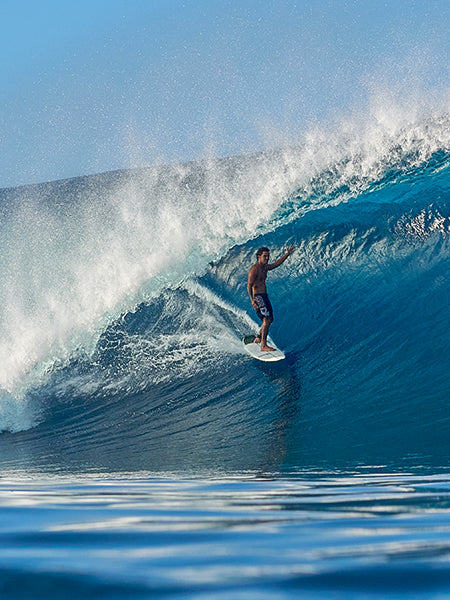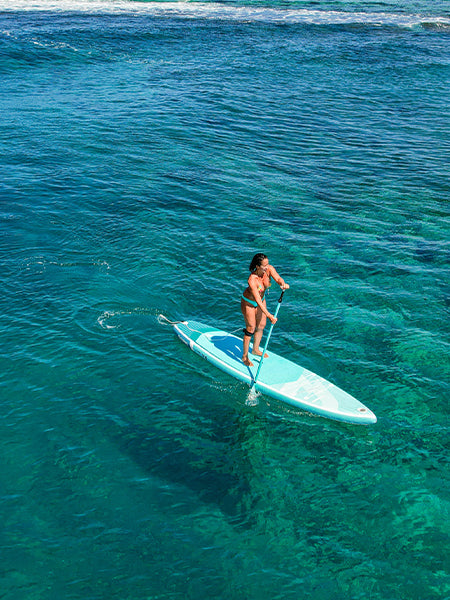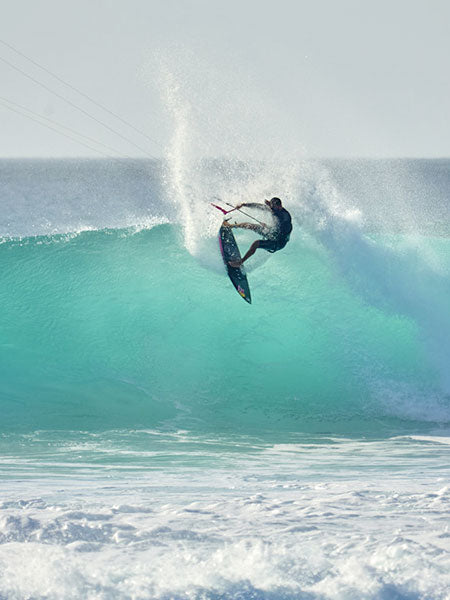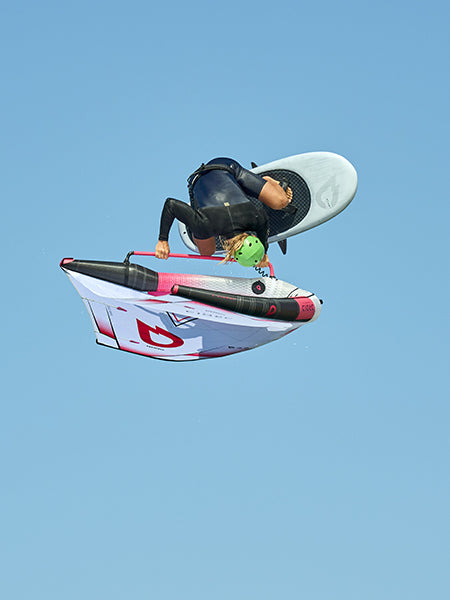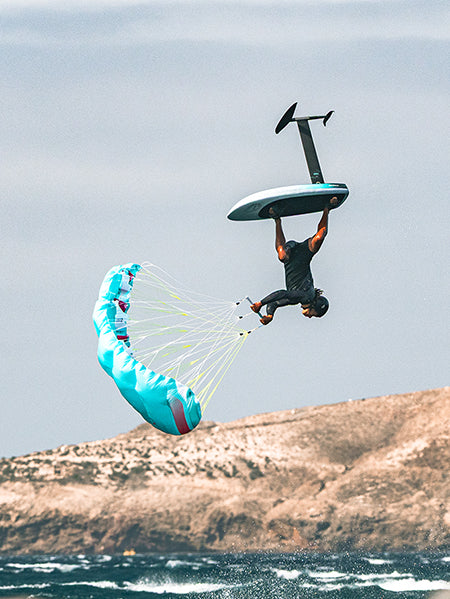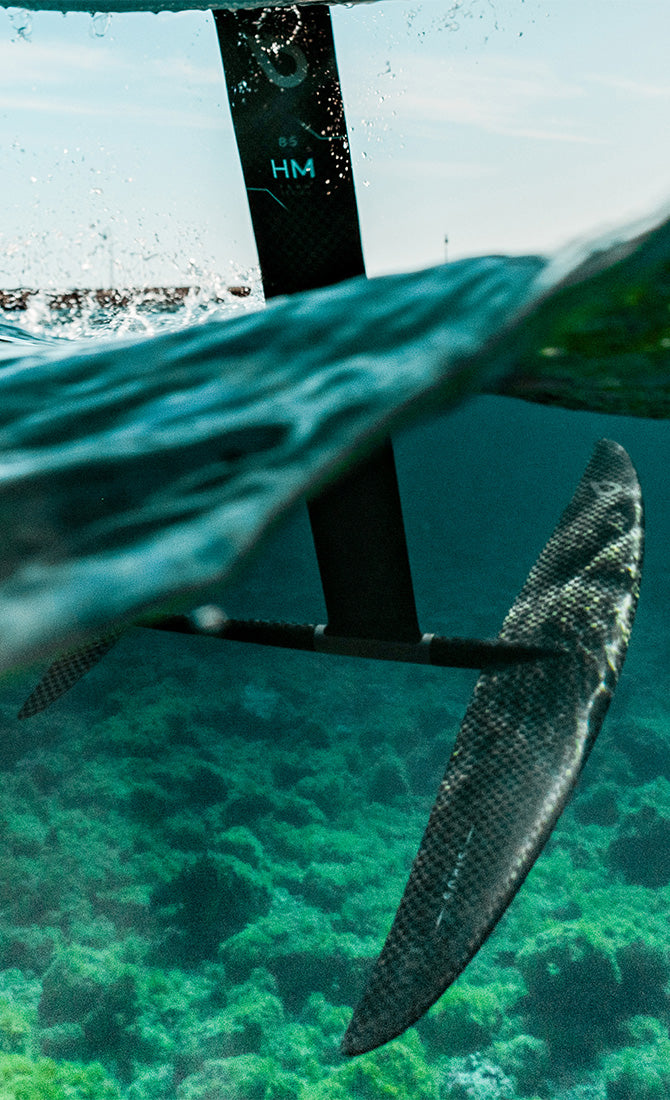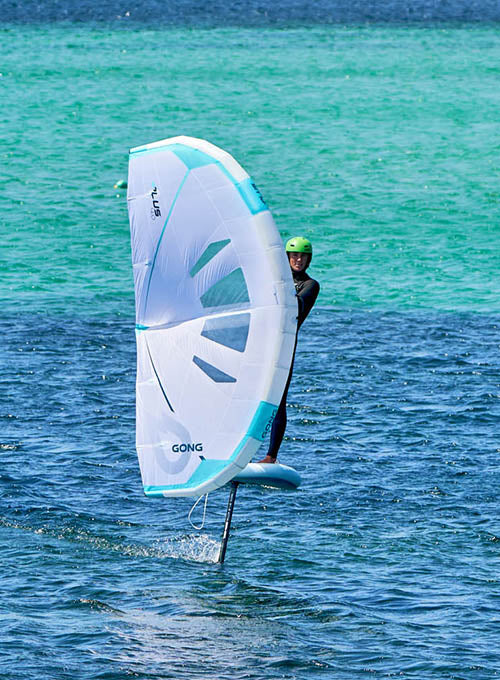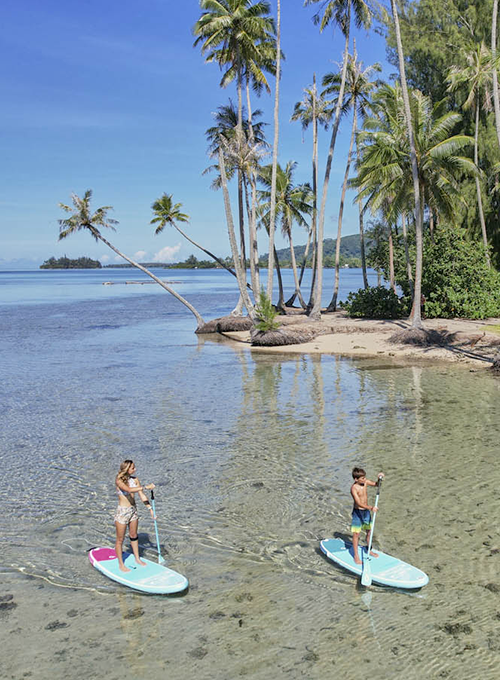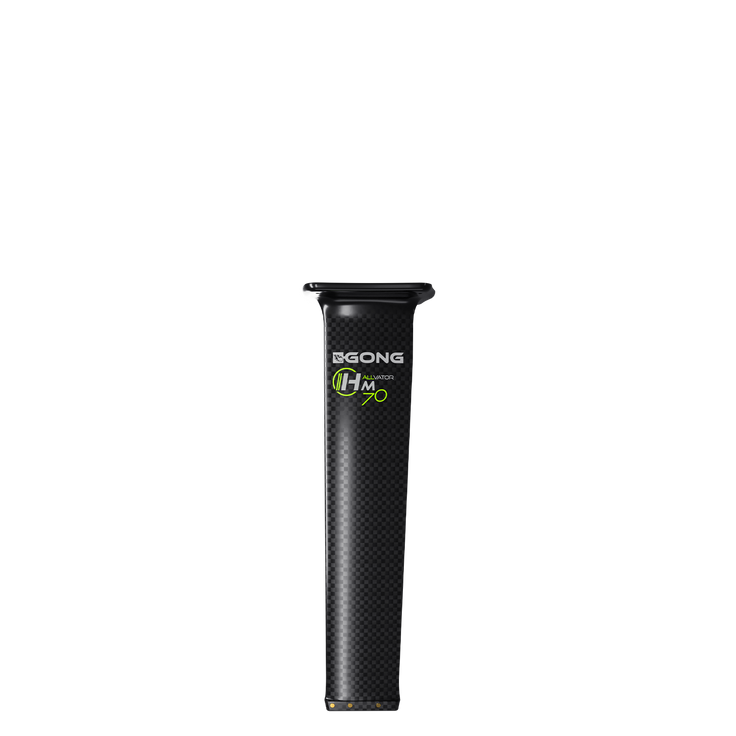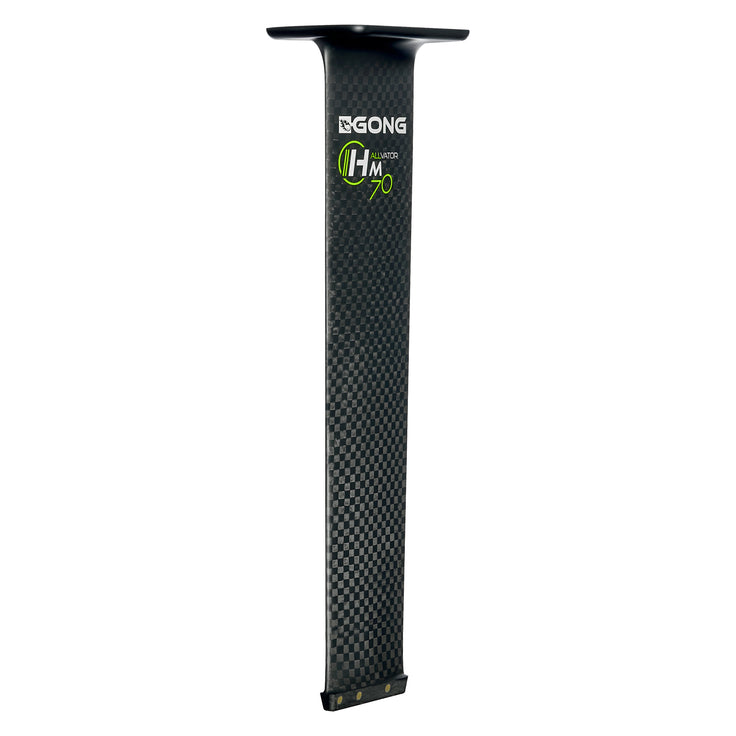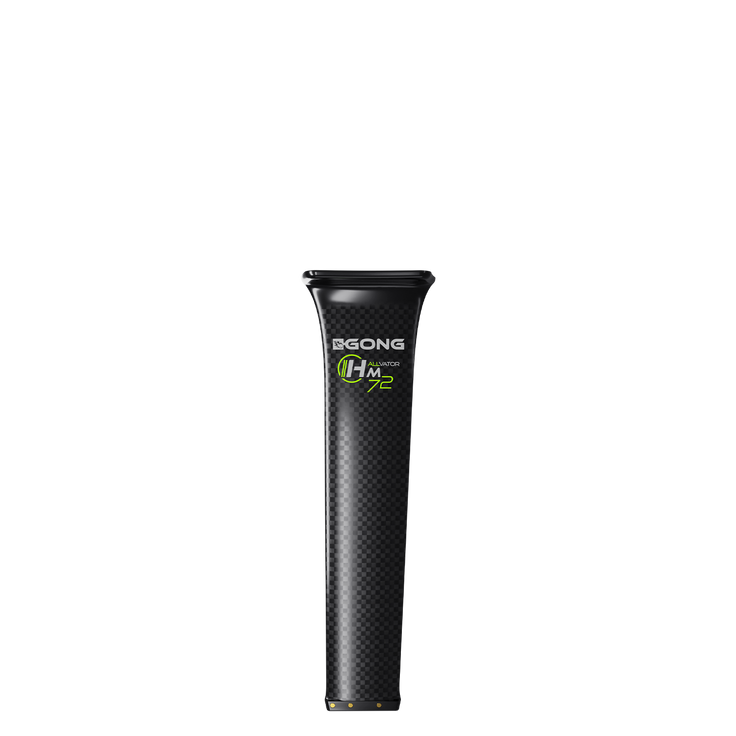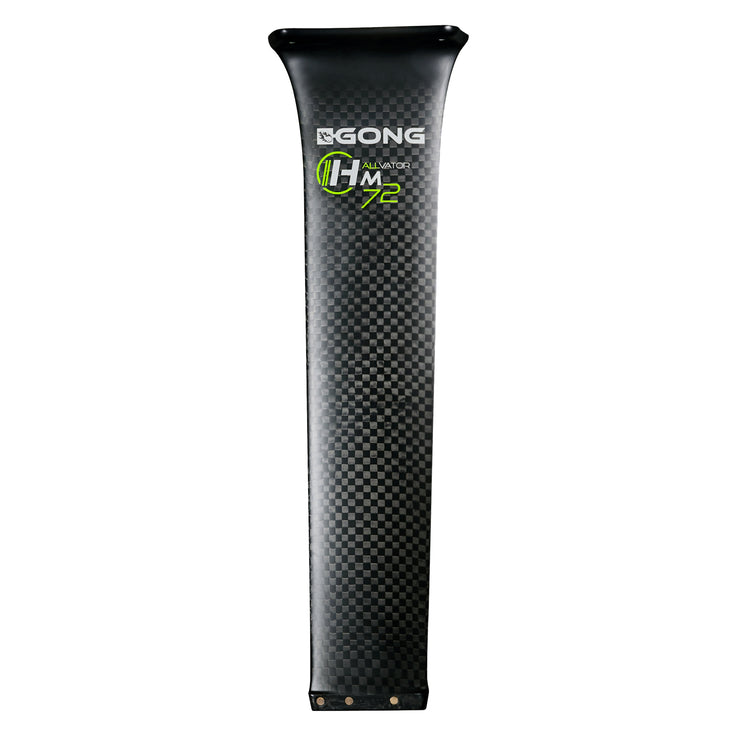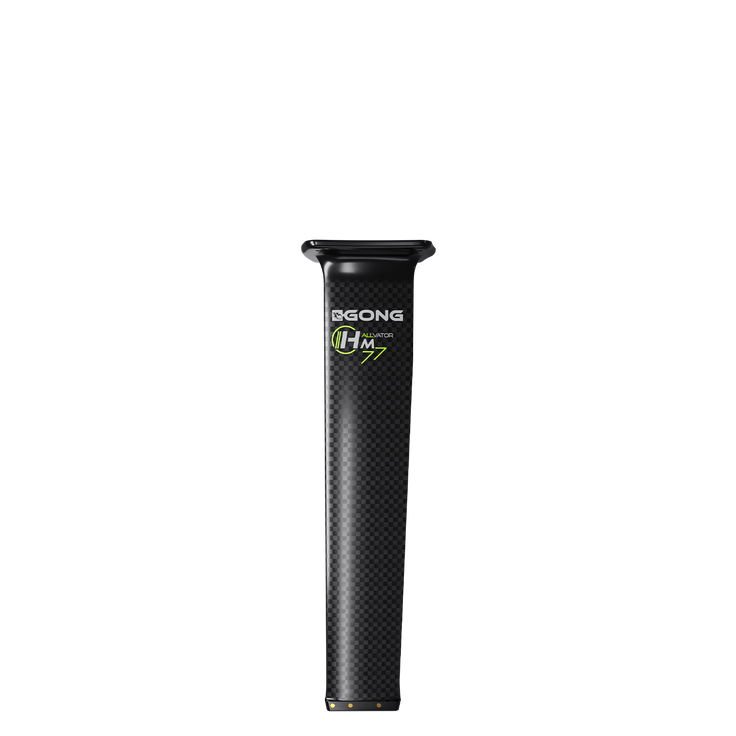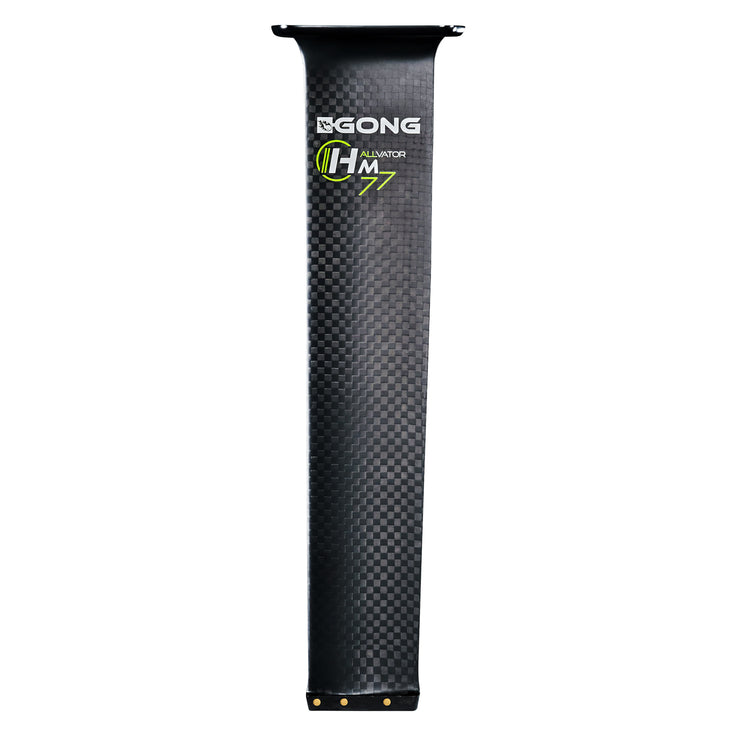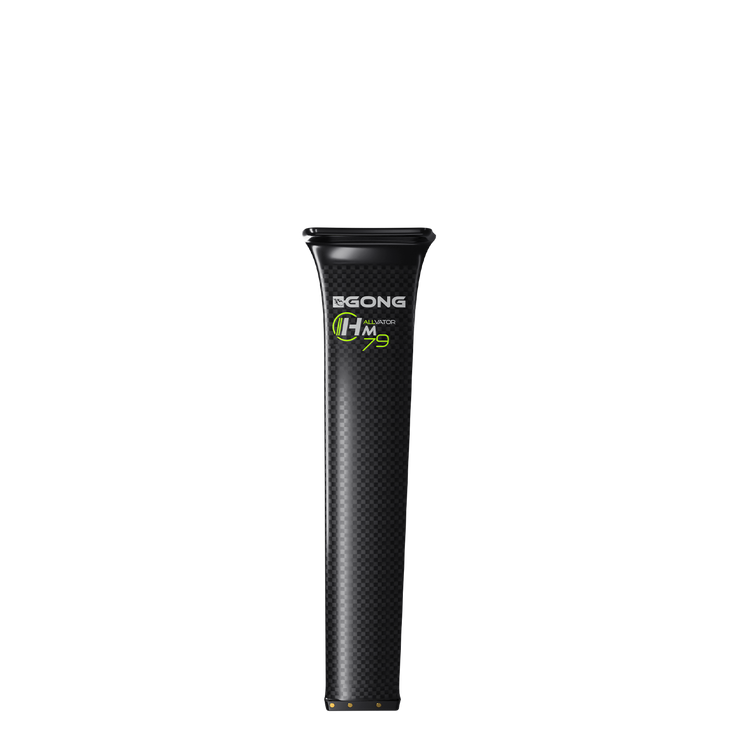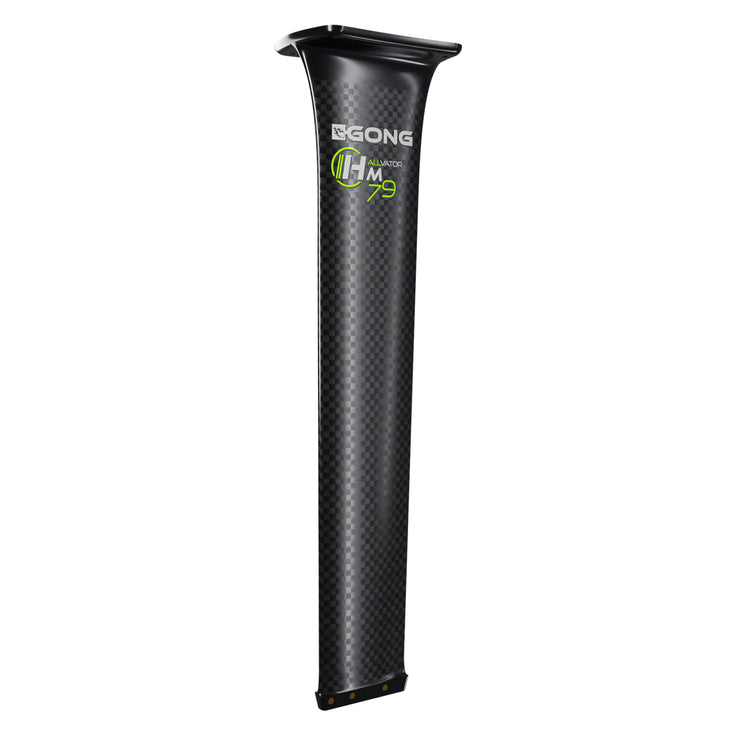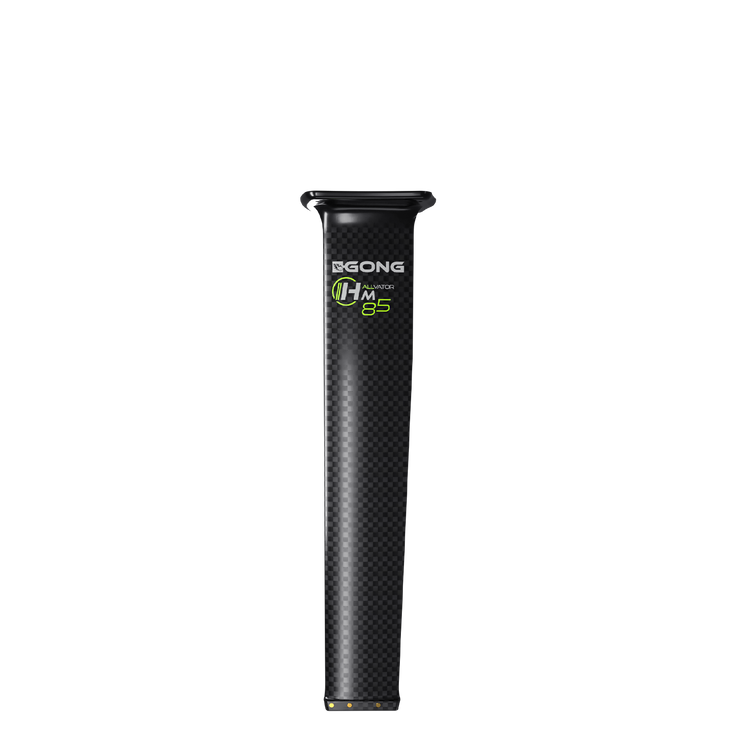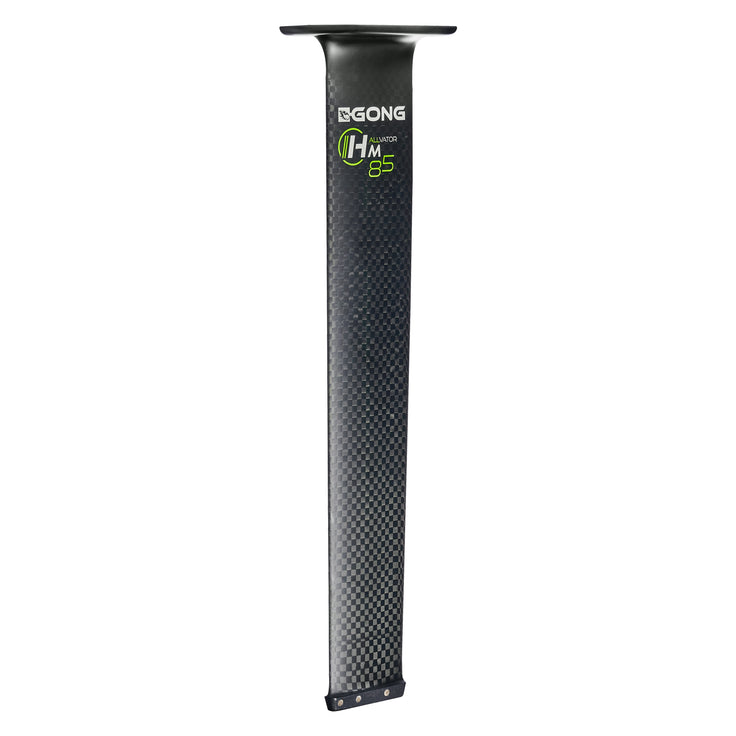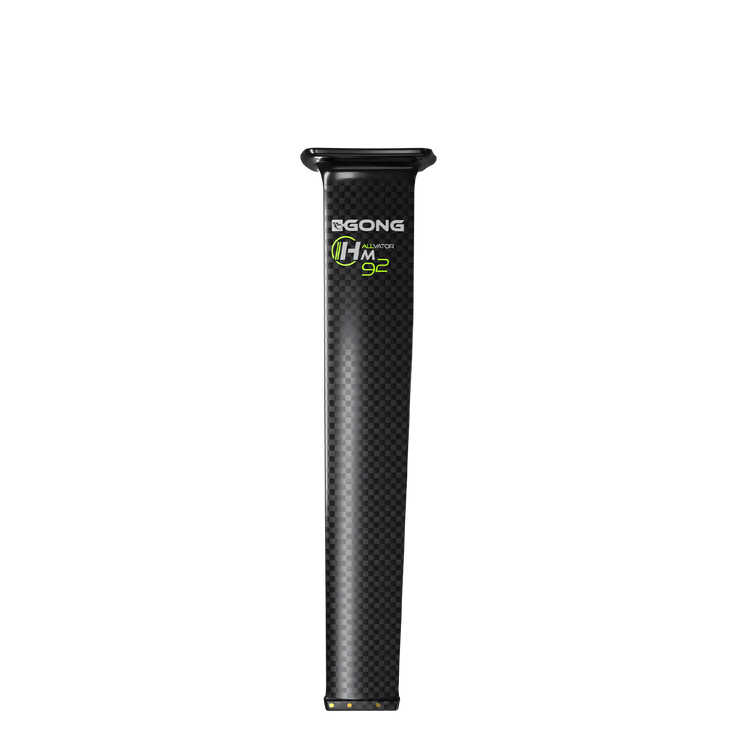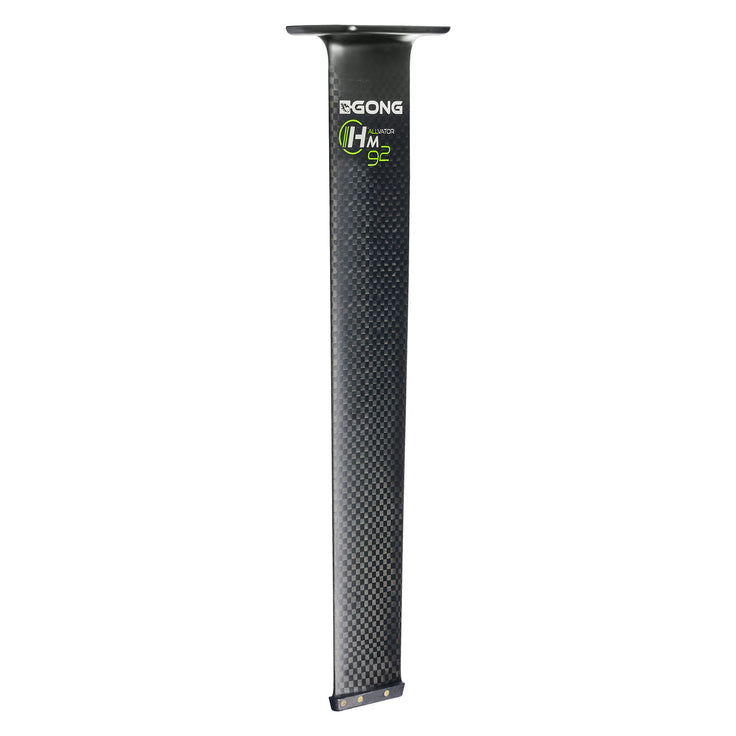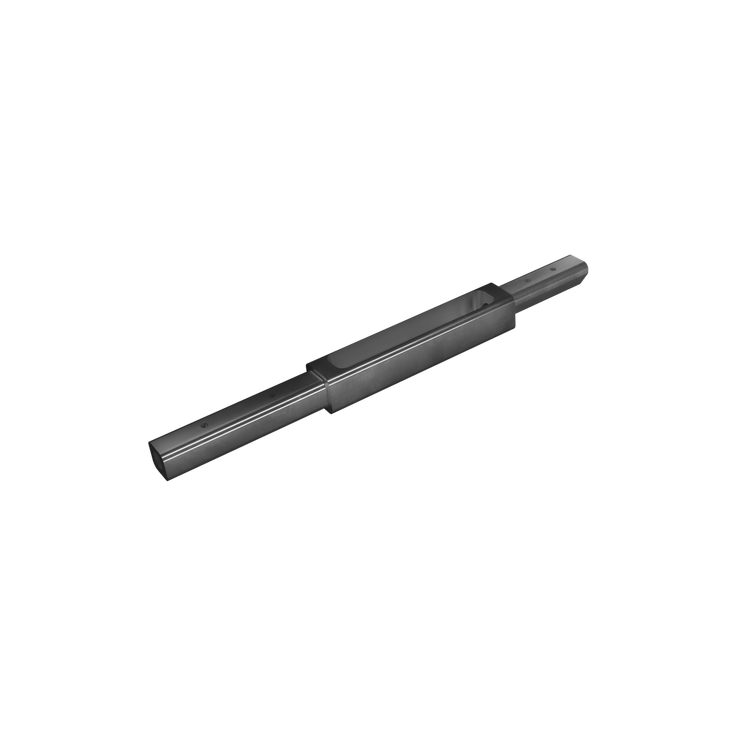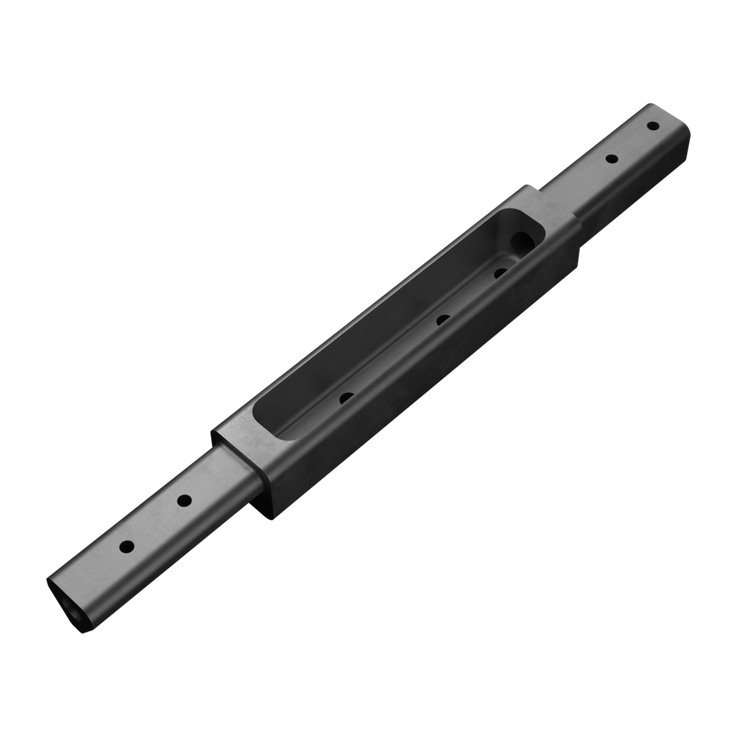GEAR: WHICH HM MAST FOR MY FOIL SET-UP?
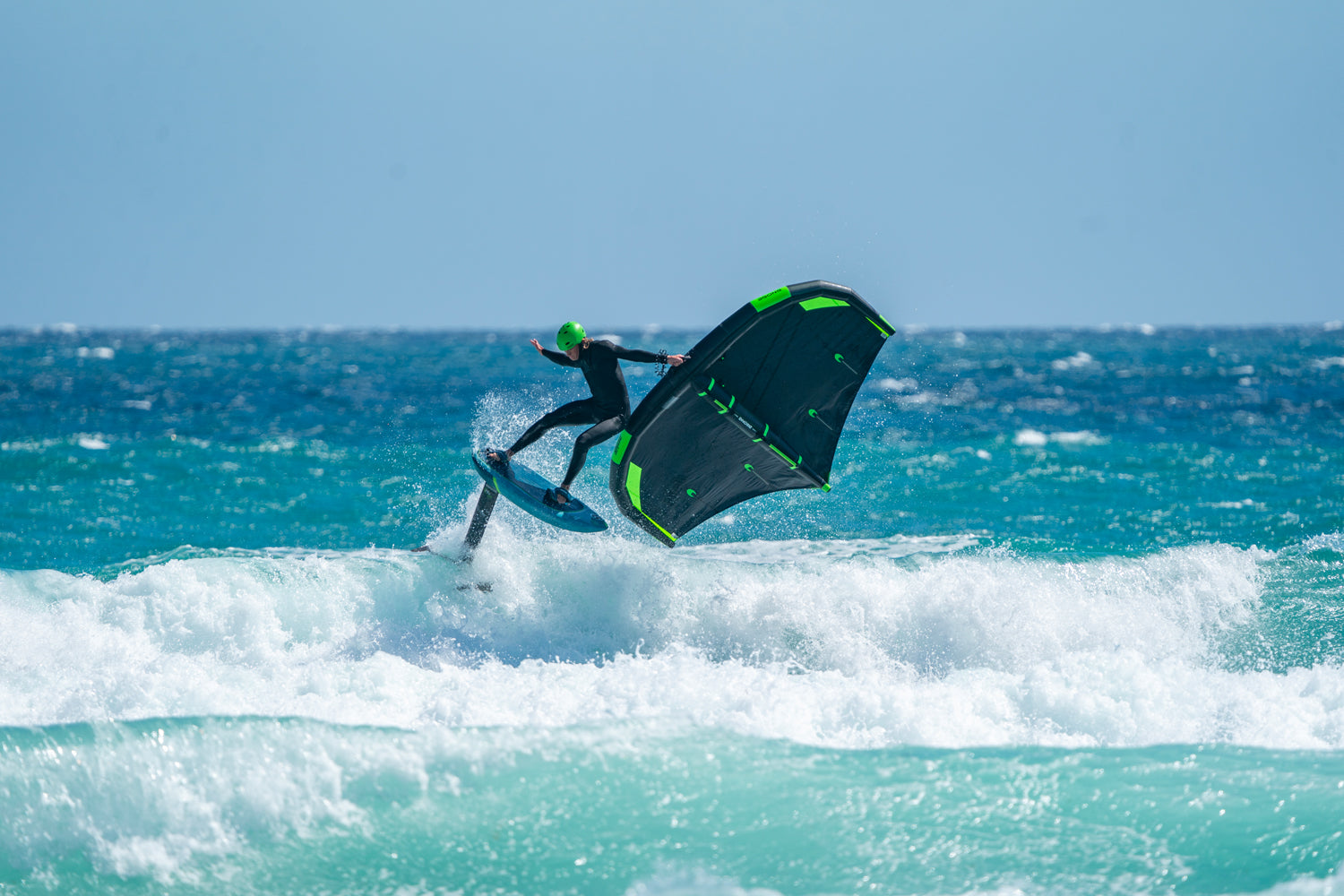
Choose the High Modulus mast that will offer you the highest level of performance and the best sensations for your use!
The key word when talking about a mast is rigidity. It ensures a direct transmission, without any blurry or parasitic movement, of all your intentions to the foil. By choosing a GONG mast in High Modulus technology, you are choosing the best of the best in terms of rigidity and durability. The steering precision provided by the rigidity of a High Modulus mast translates on the water into a huge boost in performance, in particular through the confidence and control it gives you:
- More precise and committed turns;
- A better pop;
- A pumping effort perfectly transmitted to the foil;
- More tolerance for piloting errors that the mast won’t amplify;
- …
Our range of HM masts offers sizes of 70, 72, 77, 79, 85, 86 and 92 cm to adapt to all foil practices (wing foiling, surf/SUP foiling, kite foiling, wake or dock start) with the shapes of sizes 72, 79 and 86 cm specially developed for front wings of a very large wingspan.
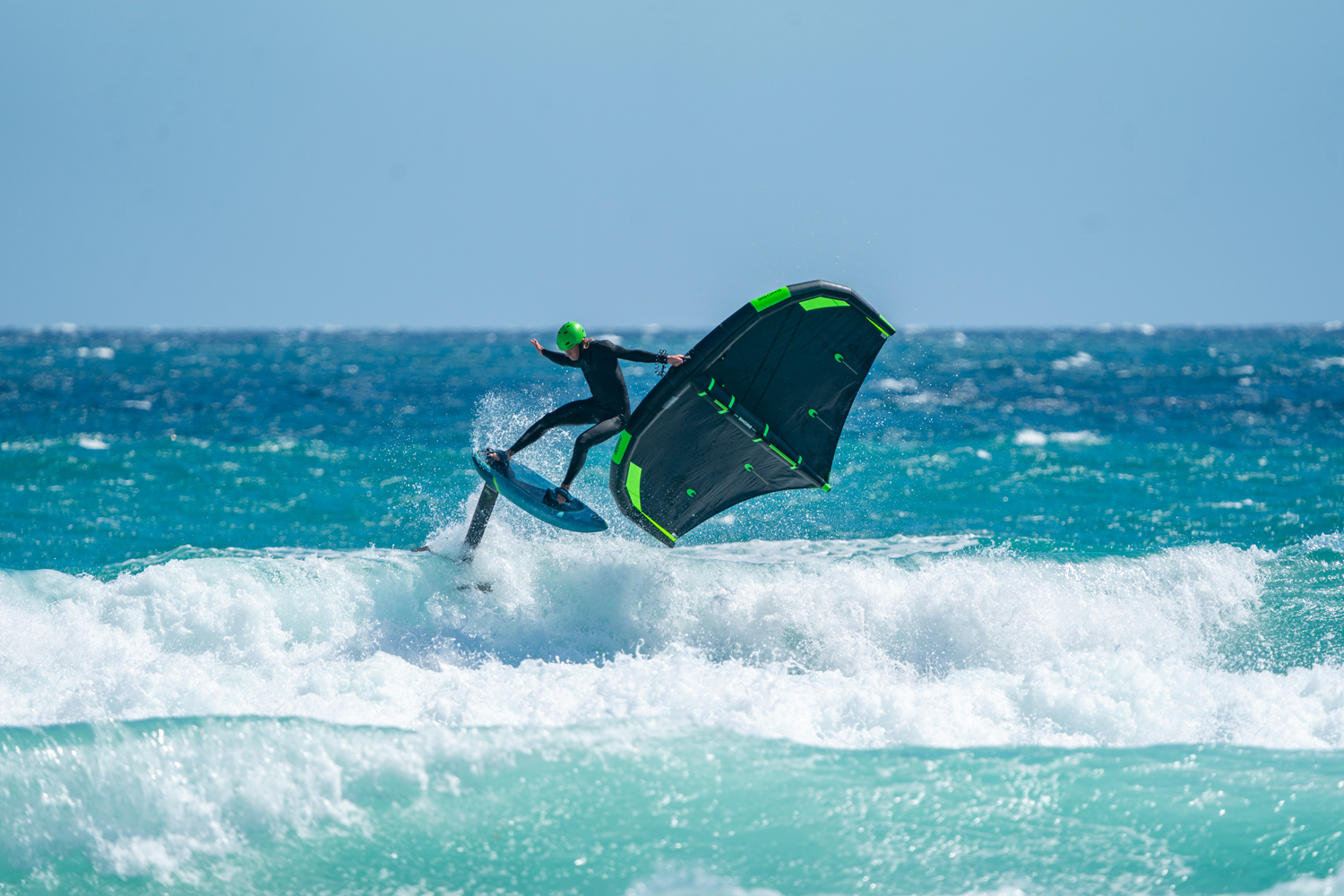
Specific shapes
The use of wings with very large wingspans calls for the use of masts capable of responding to the enormous mechanical stresses that they produce. For these giant wings, specific shapes of our HM masts have been developed. These are the masts 72HM, 79HM and 86HM. Their use is strongly recommended to extract the full potential of these front wings which are magic in small conditions. As is the use of the Titanium Pro fuselage which is an insurance of durability for the important constraints associated with this type of front wing, in particular when pumping.
On these specific shapes, the fillets at the level of the top plate have been completely redesigned to take up the forces over the entire length of the latter. This geometry maximizes torsional rigidity.
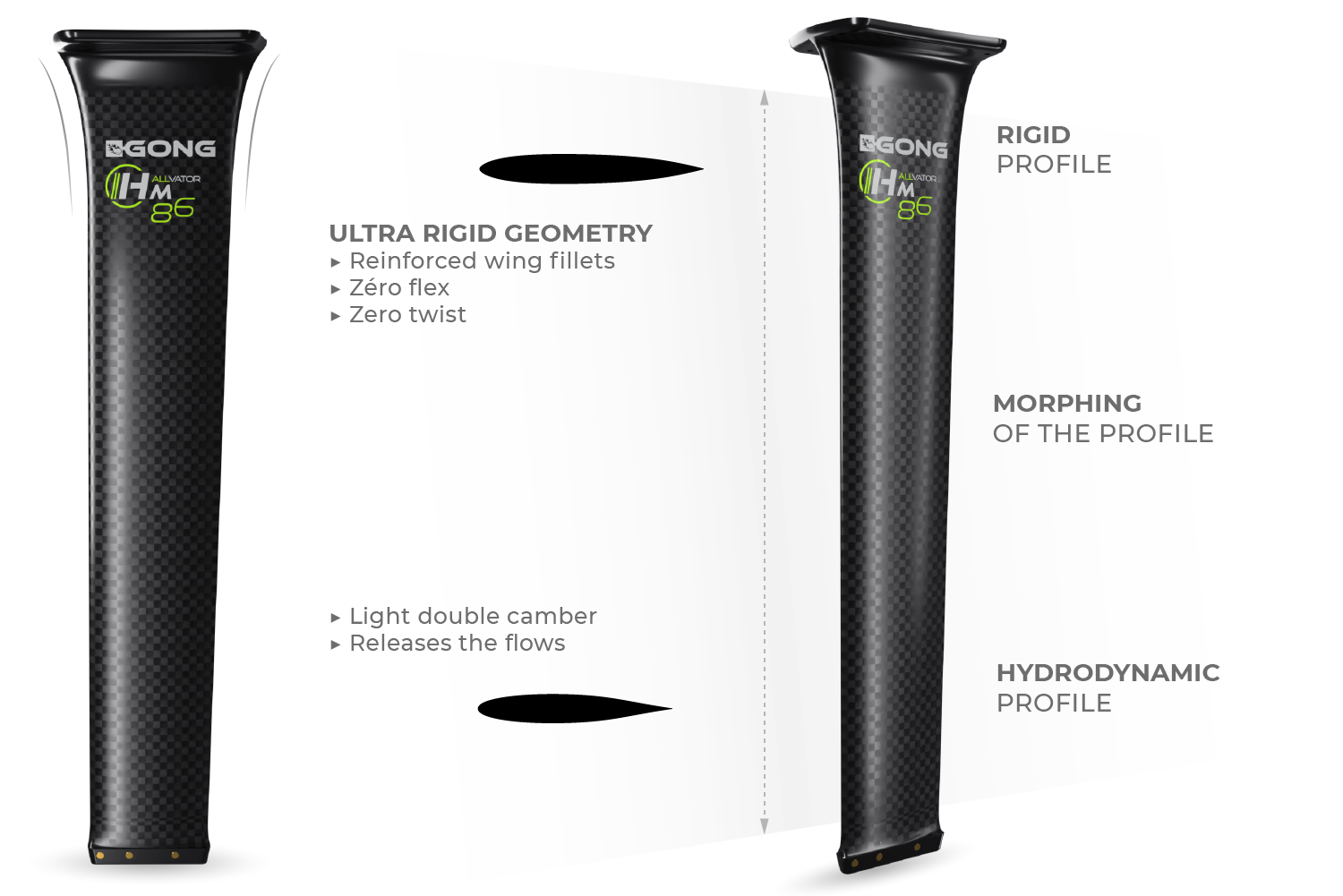
There is also a slightly thicker profile as shown in the table below. This further increases rigidity by losing only limited top speed on masts intended for the use of large front wings where early take-off and pumping are the top priorities.

Sizes, chords and thicknesses
While the size of your mast (its length) is essentially dependent on your practice as explained in the next point, the chords and thicknesses adopt qualities that are relevant across most disciplines.
- The chord length naturally plays an important role in ensuring the mechanical rigidity of your mast. It is also decisive for the stability and maneuverability of your foil. A large chord stabilizes your foil while a reduced chord increases the maneuverability of your set-up. The chords of our HM masts are optimized to offer the perfect balance of control, maneuverability and also speed. Beyond the drag, the chord length dictates the thickness necessary to ensure the rigidity of the mast, therefore its speed.
- The thicknesses of our HM masts are studied to ensure the perfect rigidity of your set-up and guarantee the speed which is the basis of all your actions on a foil. This is the basis of sensations and performance. The highest speeds will be reached in Race by a 92HM Mast, in kite or wing foiling, which has the lowest thickness.
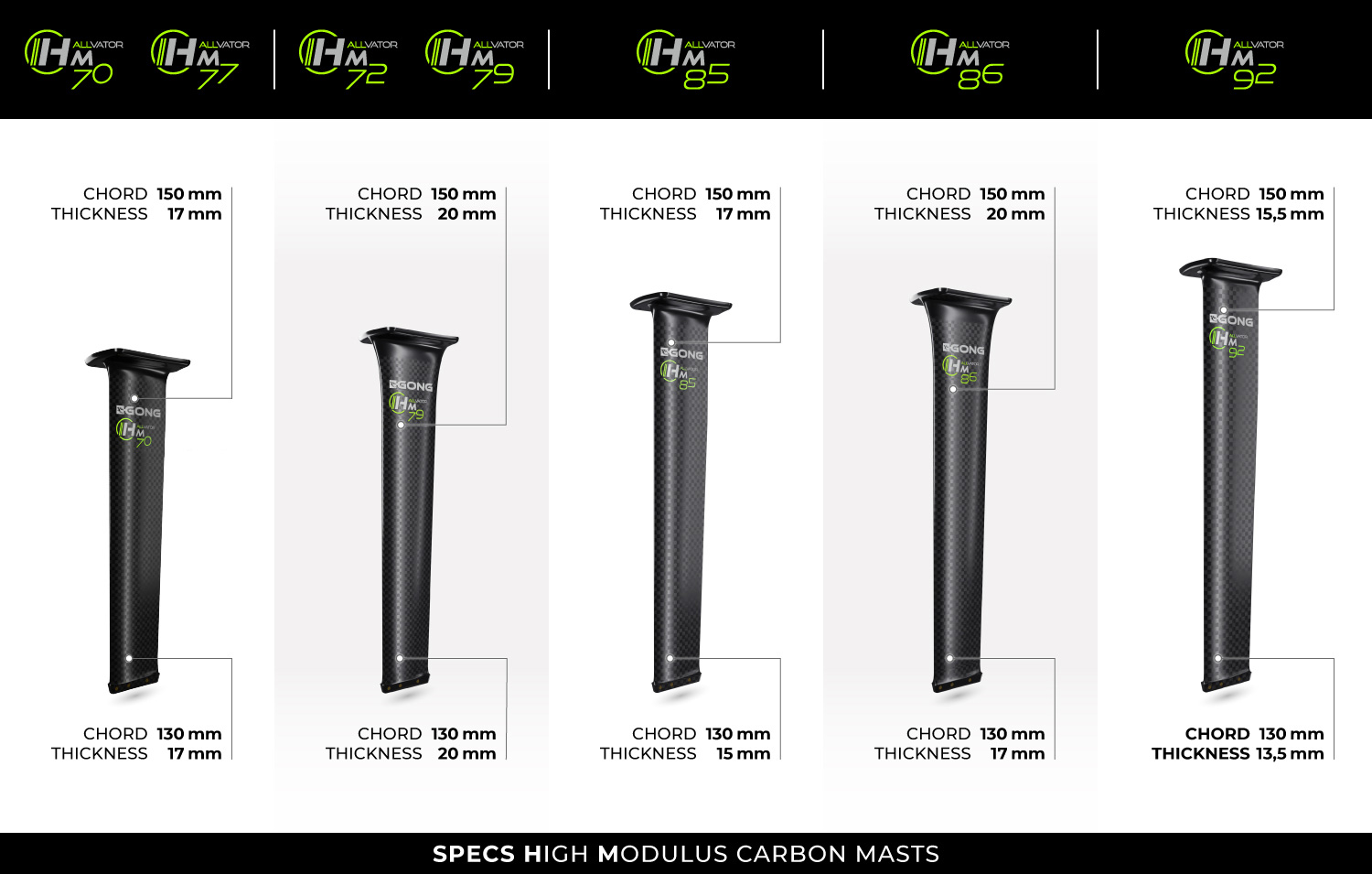
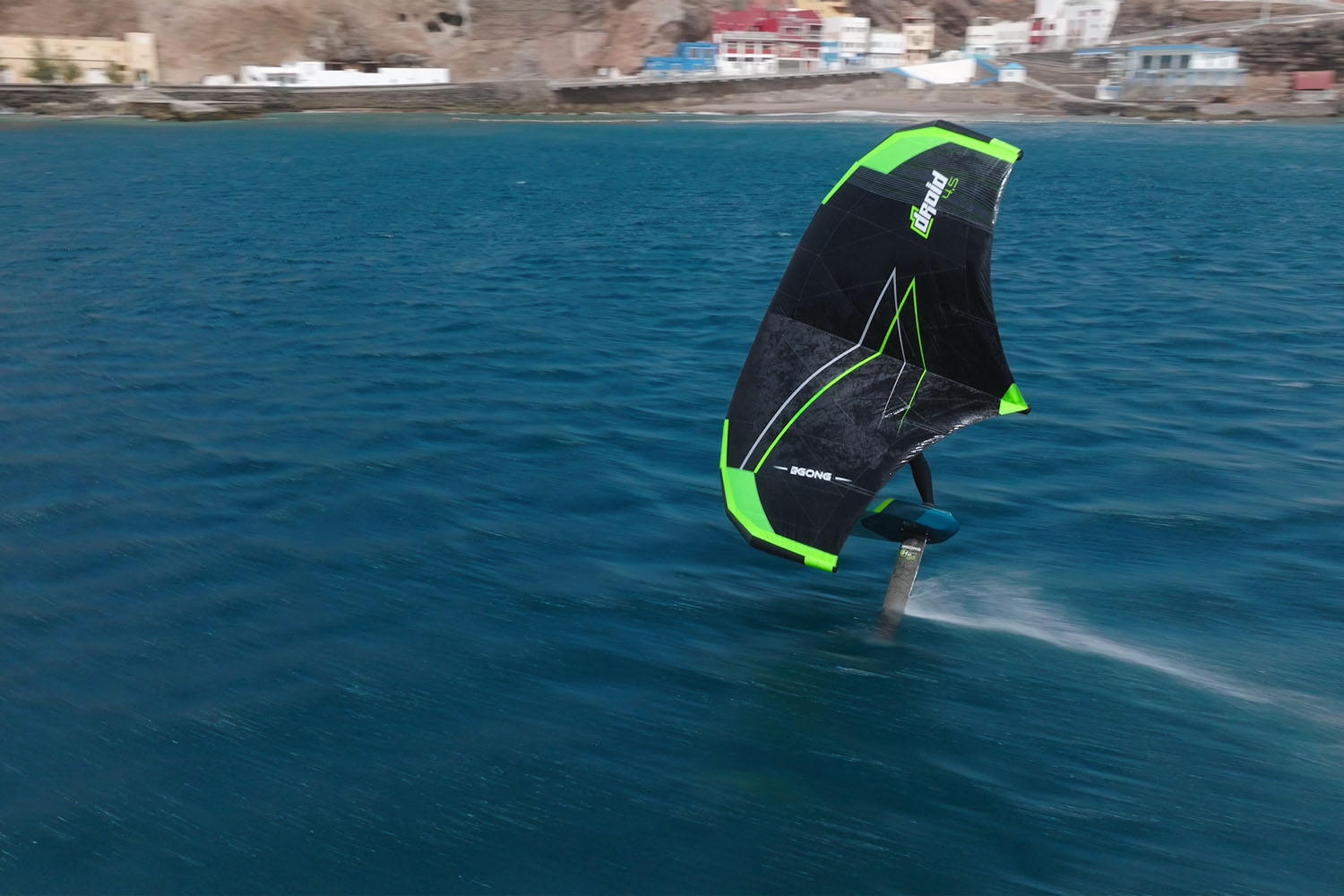
What size for my practice?
Our recommendations below are based on your sport and the size of your foil.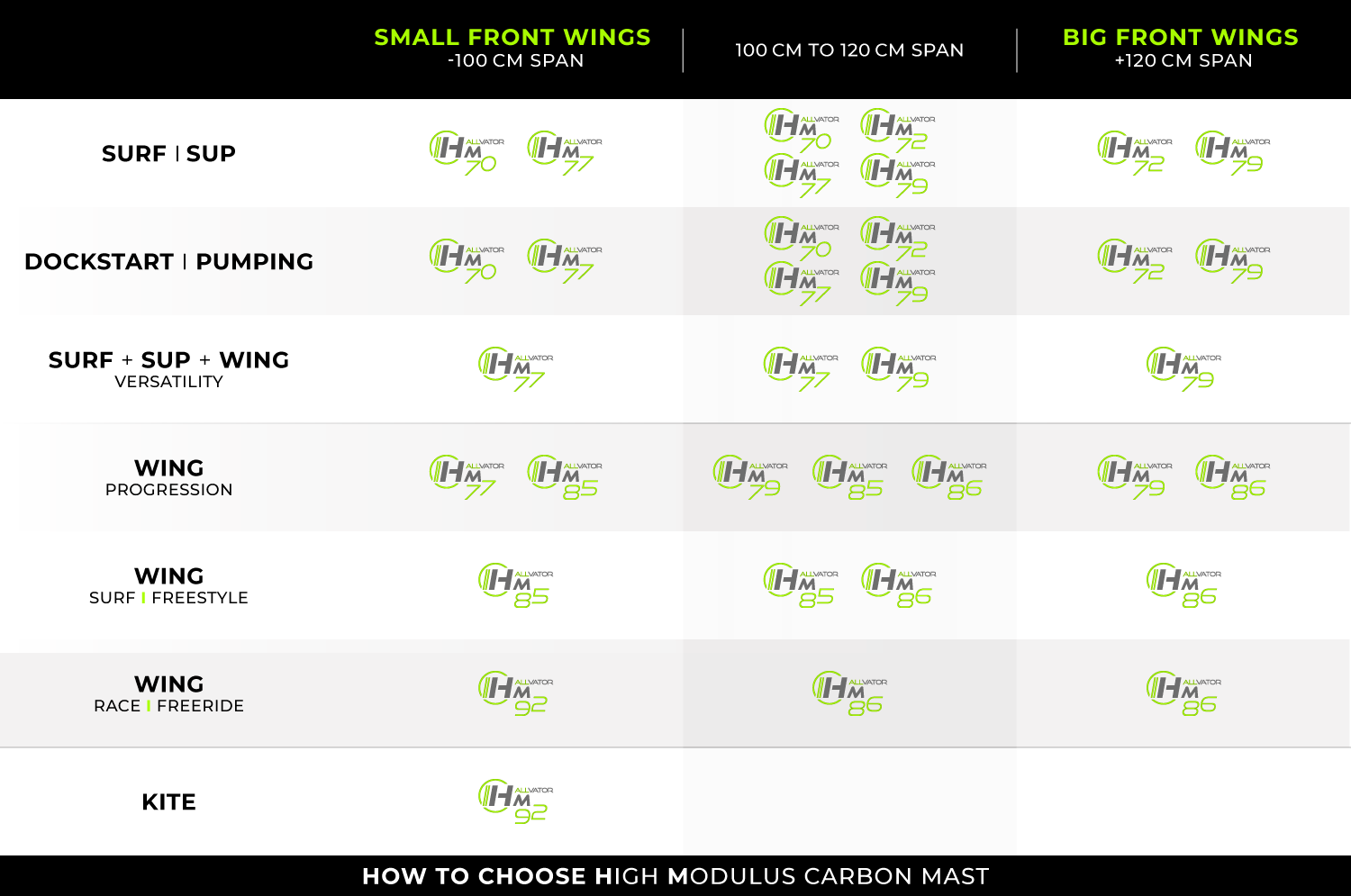
When several size choices are possible for the same configuration (sport/set-up), you should choose the size that fits your personal preferences/needs, such as:
In wing foiling:- More control at high speed > choose the biggest size to have margins.
- More control of the foil > choose the smallest size to limit leverage effects.
- More amplitude in the jumps > choose the largest size without going to extremes. A 85cm improves the pop but a bigger mast loses responsiveness to trigger the pop.
- More radicality in the turns > choose the larger size to lean as much as possible, or choose the small size to move faster from one rail to another.
- More versatility > choose the smallest size that allows you to do other sports.
- A home spot with shallow waters> choose the smallest size.
- …
Note that a thicker mast intended for larger front wings will work fine with a small front wing too. The difference in top speed is marginal except for a pro.
In surf / SUP foiling:- Optimum responsiveness > choose the smallest size.
- A size adapted to small waves (meaning shallow waters) > choose the smallest size.
- More margin to stay away from bumps or to get over waves > choose the largest size.
- More amplitude to pump > choose the largest size.
- More tolerance in tow-in when using small and nervous front wings > choose the larger size.
- …
Remember that in surf foiling, the need for a longer mast will be felt as the waves get bigger, the angle of your turns becomes more radical and the pumping amplitude increases. In other words, as you progress you tend to increase the size of the mast.
